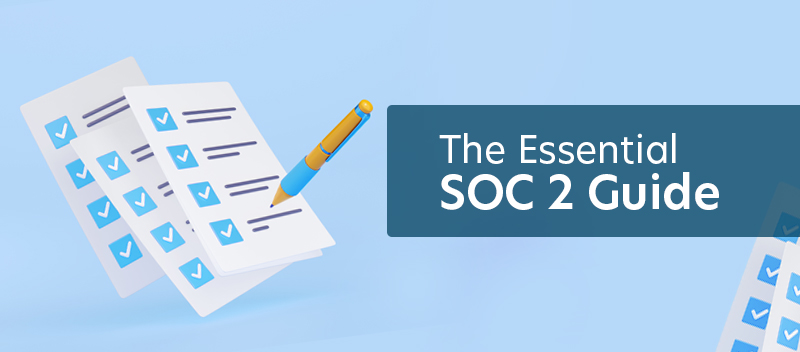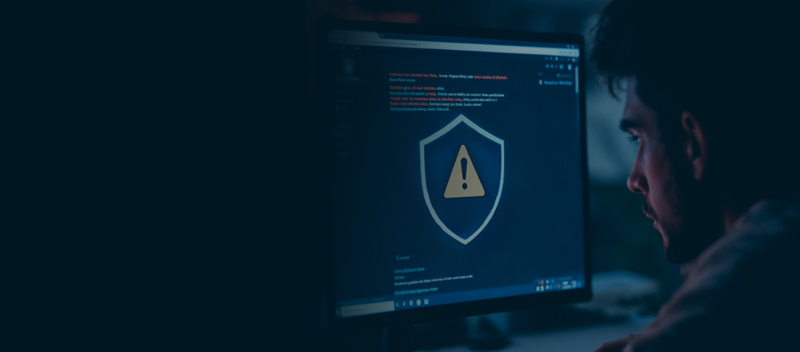Blog Starting Your SOC 2 Journey – The Essential Guide
Starting Your SOC 2 Journey – The Essential Guide

In the modern business environment, compliance with SOC 2 is essential. When you receive SOC 2 certification, it allows you to create trust and demonstrate your commitment to safeguarding the data of customers. Furthermore, this certification distinguishes you from others and adds value to your image.
As provided in this guide, we will take you through key steps that you must take to have your SOC 2 journey started, ensuring that you are on the right track.
What is SOC 2?
SOC 2 Compliance is meeting the standards the American Institute of Certified Public Accountants (AICPA) sets for managing customer data. This management is evaluated based on five Trust Services Criteria.
SOC 2 Compliance is built around the five “trust service principles,” namely security, availability, processing integrity, confidentiality, and privacy.
— Security. Information and systems are protected against unauthorized access, unauthorized disclosure of information, and damage to systems that could compromise the availability, integrity, confidentiality, and privacy of information or systems and affect the entity’s ability to achieve its objectives.
Security refers to the protection of
- i. information during its collection or creation, use, processing, transmission, and storage, and
- systems that use electronic information to process, transmit or transfer, and store information to enable the entity to meet its objectives. Controls over security prevent or detect the breakdown and circumvention of segregation of duties, system failure, incorrect processing, theft or other unauthorized removal of information or system resources, misuse of software, and improper access to or use of, alteration, destruction, or disclosure of information.
— Availability. Information and systems are available for operation and use to meet the entity’s objectives.
— Processing Integrity. System processing is complete, valid, accurate, timely, and authorized to meet the entity’s objectives.
— Confidentiality. Information designated as confidential is protected to meet the entity’s objectives. Confidentiality addresses the entity’s ability to protect information designated as confidential from its collection or creation through its final disposition and removal from the entity’s control in accordance with management’s objectives.
— Privacy. Personal information is collected, used, retained, disclosed, and disposed of to meet the entity’s objectives.
SOC 2 is essential for ensuring the security and reliability of data. In an increasingly digital environment, it helps organizations set up and uphold strong standards for data protection, fostering trust with stakeholders and consumers.
For more on our SOC 2 compliance services, Click Here
Who Needs SOC 2 Compliance?
Any company handling sensitive consumer data, especially those in the service sector, must adhere to SOC 2 compliance.
Examples of Industries and Services
— Technology Companies
- SaaS providers need SOC 2 to assure clients their data is securely handled.
- Cloud services must prove their infrastructure’s security and reliability.
— Healthcare
- Telemedicine platforms require SOC 2 to protect sensitive patient information.
- Healthcare IT services benefit from demonstrating robust data security measures.
— Finance
- Fintech companies use SOC 2 to build trust with customers regarding financial data security.
- Payment processors need to ensure their systems are secure from breaches.
— Consulting Firms
- IT consulting firms handling sensitive client data must show they adhere to rigorous security standards.
— Marketing Agencies
- Agencies managing and analyzing customer data for personalized marketing need SOC 2 compliance to protect that data.
By achieving SOC 2 certification, these organizations can not only meet regulatory requirements but also gain a competitive edge by demonstrating their commitment to data security and privacy.
The SOC 2 Certification Process
Navigating the SOC 2 audit process can be a complex task. On the other hand, knowing the essential phases may facilitate the procedure and guarantee a straightforward route to certification. Here’s a detailed breakdown of what organizations can expect during a SOC 2 audit:
-
- Choose Your Report Type: SOC 2 audits come in two types – Type I and Type II. Type I reports on the design of controls at a specific point in time, while Type II reports on the effectiveness of these controls over a period of time.
- Define the Audit Scope: This involves identifying the systems, processes, and locations included in the audit. The Trust Services Criteria relevant to your business primarily determine the scope.
- Conduct a Gap Analysis: This preliminary assessment helps identify areas where your current controls might not meet SOC 2 standards. The findings from this analysis can guide your preparation for the audit.
- Complete a Readiness Assessment: This is an in-depth review of your organization’s readiness for the SOC 2 audit. It involves evaluating policies, procedures, and controls against the relevant Trust Service Criteria.
- Design and Implement Controls: Based on the readiness assessment, design and implement the necessary controls to address any identified gaps.
- Undergo the Audit: An independent auditor will evaluate your organization’s security posture related to the chosen Trust Services Criteria. They will test the design and operating effectiveness of your controls.
- Review the Audit Report: The auditor will provide a written evaluation of your internal controls in the SOC 2 audit report. This report assures your organization’s security, availability, processing integrity, confidentiality, and/or privacy controls.
- Achieve Certification: If the audit is successful, your organization will achieve SOC 2 certification, demonstrating your commitment to data security.
Remember that maintaining SOC 2 compliance requires a continuous commitment to data security rather than a one-time effort. Protecting the interests of your stakeholders and upholding compliance need constant improvement and regular monitoring.
Preparing for SOC 2 Compliance
Getting ready for SOC 2 compliance involves several crucial steps:
Conduct a Gap Analysis and Risk Assessment
- Start by evaluating your current security measures against SOC 2 requirements. This will assist you in pinpointing regions in need of development.
- Gap Analysis: Compare your existing controls with SOC 2 criteria to pinpoint deficiencies.
- Risk Assessment: Identify potential risks to your information systems and data. This helps in prioritizing which areas need immediate attention.
Develop and Implement Necessary Policies and Procedures
Once you’ve identified the gaps and risks, it’s time to develop and implement robust policies and procedures.
- Policies: Create clear, comprehensive policies covering security, availability, processing integrity, confidentiality, and privacy.
- Procedures: Establish procedures to enforce these policies consistently across your organization.
Establish a Compliance Team and Assign Responsibilities
Having a dedicated team is essential for managing SOC 2 compliance effectively.
- Compliance Team: Form a team with members from different departments, including IT, HR, and legal.
- Responsibilities: Assign specific roles and responsibilities to ensure accountability. For example:
-
- IT: Oversee system security and data integrity.
- HR: Ensure personnel adhere to security policies.
- Legal: Handle compliance documentation and audits.
-
By following these steps, your organization will be well on its way to achieving SOC 2 compliance, ensuring that your data security practices meet industry standards.
Maintaining SOC 2 Compliance
Achieving SOC 2 compliance is just the beginning. Maintaining it requires ongoing effort and vigilance. Here’s how to ensure your organization stays compliant over time.
Importance of Continuous Monitoring and Periodic Audits
Continuous monitoring and regular audits are essential to maintain SOC 2 compliance.
- Continuous Monitoring: Implement systems to continuously track and monitor your security controls. This helps in detecting and addressing issues in real-time.
- Periodic Audits: Schedule regular internal and external audits to verify that your compliance measures are effective and up-to-date. These audits help identify any lapses and ensure corrective actions are taken promptly.
Implementing a Robust Change Management Process
A solid change management process is crucial to handle updates and modifications within your IT environment without compromising security.
- Change Management: Develop a structured process for managing changes to your systems, applications, and infrastructure. This should include:
- Documentation: Keep detailed records of all changes made.
- Approval Workflow: Ensure changes are reviewed and approved by relevant stakeholders before implementation.
- Testing: Test changes in a controlled environment before deploying them to production.
Staying Up-to-Date with Evolving Regulations and Industry Best Practices
SOC 2 standards and industry regulations are continually evolving. Staying informed about these changes is vital.
- Regulations: Regularly review updates to SOC 2 criteria and other relevant regulations.
- Industry Best Practices: Stay informed about the latest security best practices and incorporate them into your compliance program.
By focusing on continuous monitoring, implementing a robust change management process, and staying current with regulations and best practices, your organization can maintain SOC 2 compliance and ensure ongoing data security.
Benefits of SOC 2 Compliance
Achieving SOC 2 compliance brings numerous advantages to your organization:
— Enhanced Confidence and Trust among Customers
Your dedication to data security, privacy, and integrity is demonstrated by your SOC 2 accreditation. Customers will feel more confident in your company since you are assuring them that their information is secure.
— Competitive Advantage in the Market
In a crowded marketplace, SOC 2 compliance sets you apart from competitors. Choosing a service provider may be greatly influenced by proving to potential customers and partners that you adhere to stringent security requirements.
— Improved Operational Efficiency and Risk Management
The process of achieving SOC 2 compliance involves streamlining your operations and implementing robust security controls. This boosts your capacity to control and reduce hazards in addition to increasing operational efficiency.
Recap and Next Steps
To sum up, companies that handle sensitive consumer data must be SOC 2 compliant. In addition to giving you a competitive edge and increasing consumer trust, it also enhances operational efficiency and risk management. Starting your SOC 2 journey now ensures you stay ahead in a constantly evolving landscape.
We encourage you to delve deeper into SOC 2 essentials and seek guidance from experts like TrustNet to navigate this journey successfully.
Get started with TrustNet to achieve seamless SOC 2 compliance and gain a competitive edge today. Talk to an Expert now.




